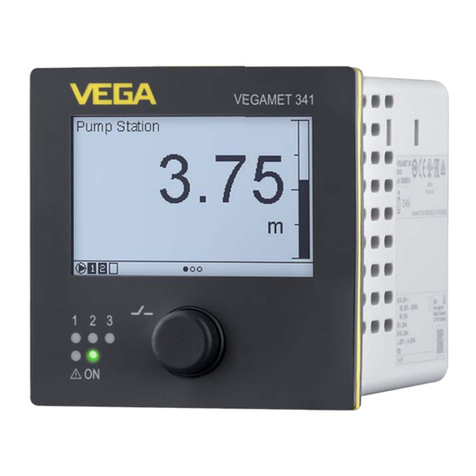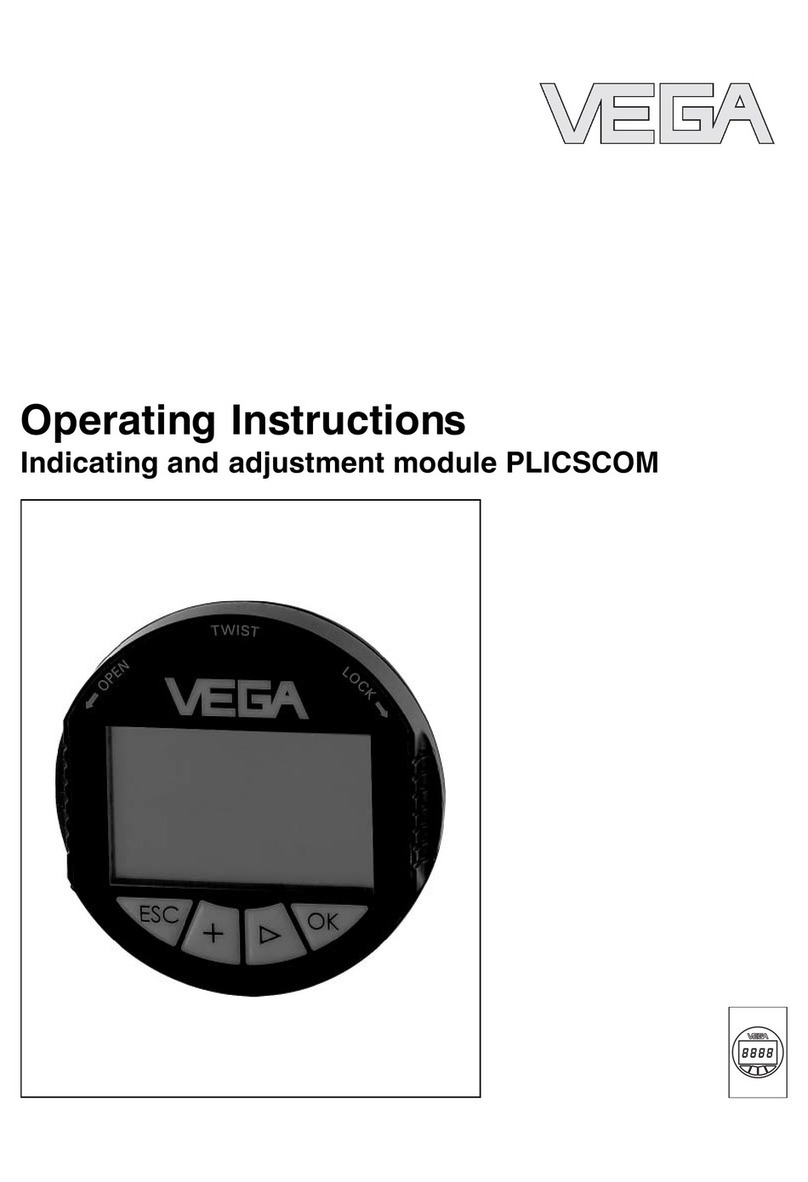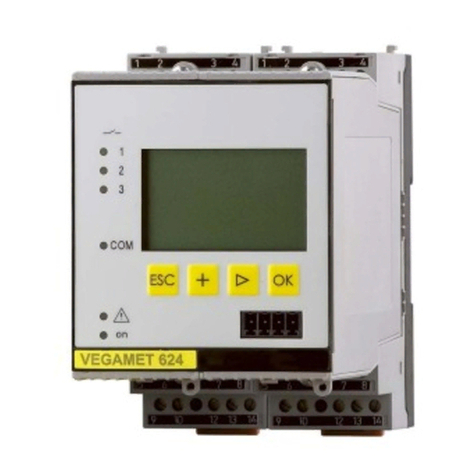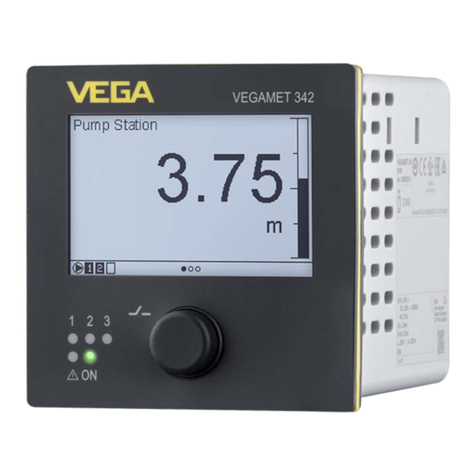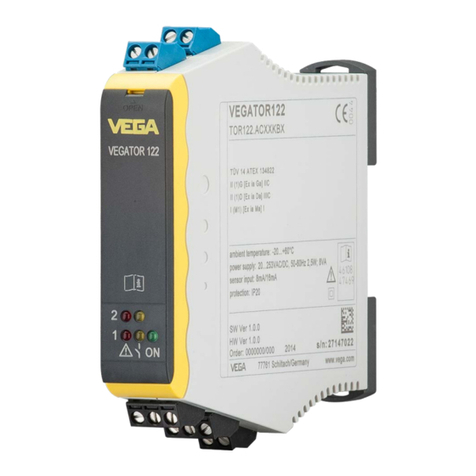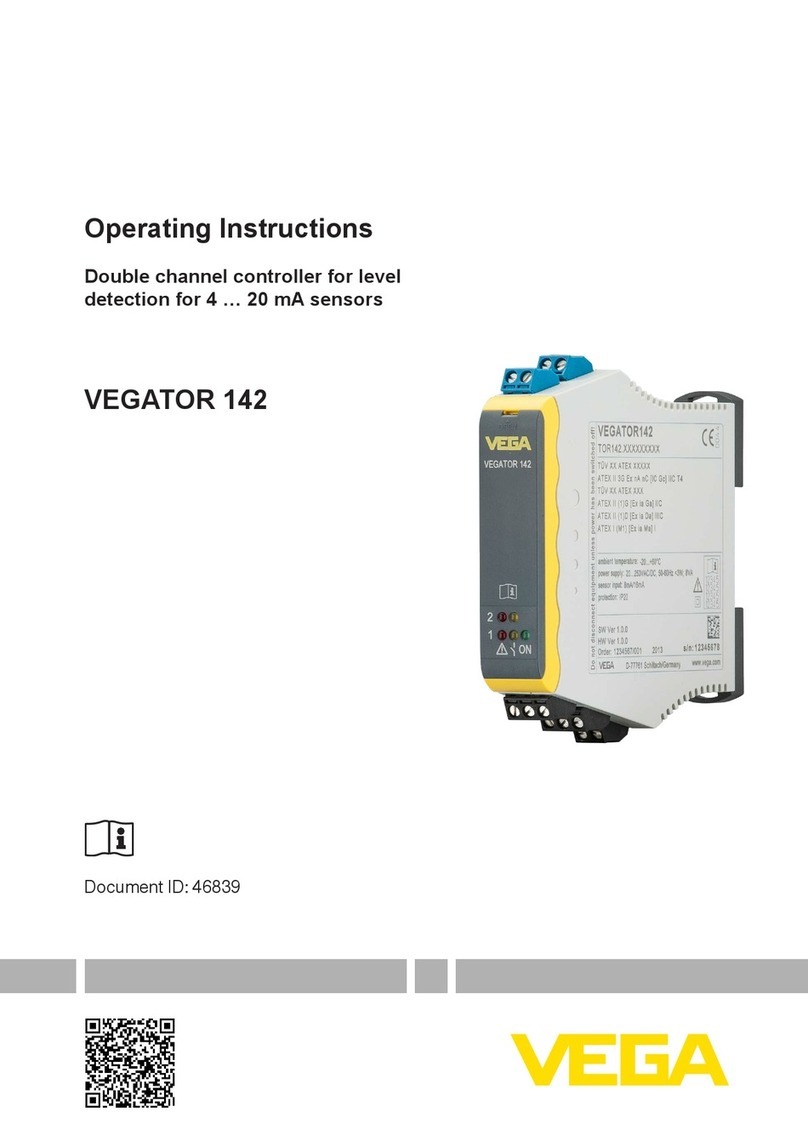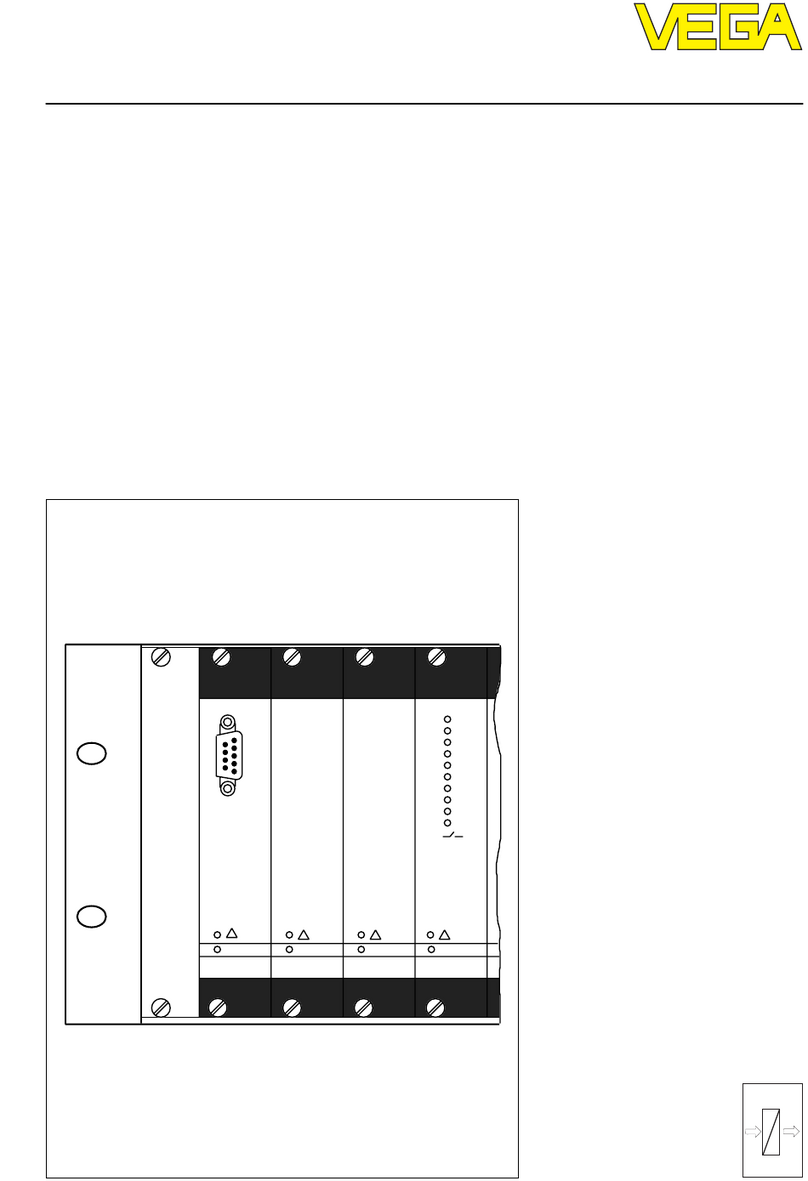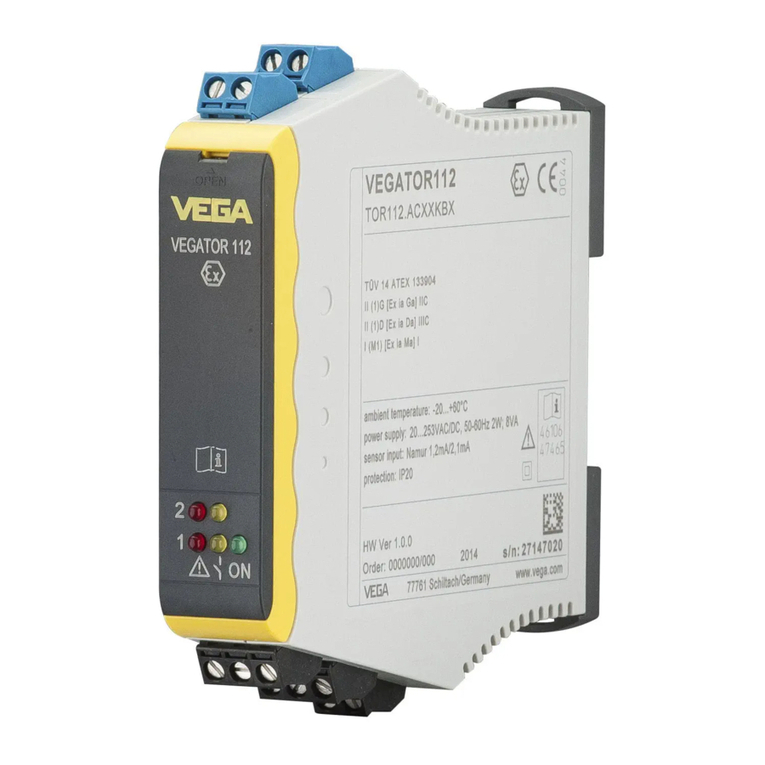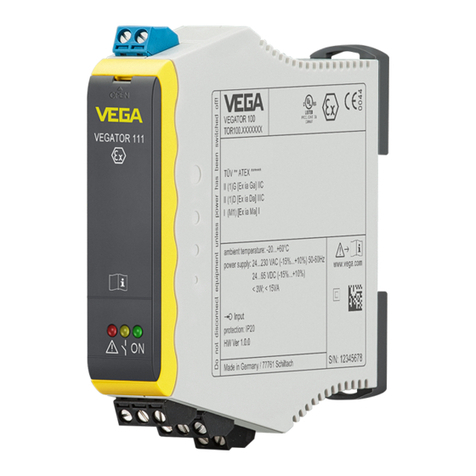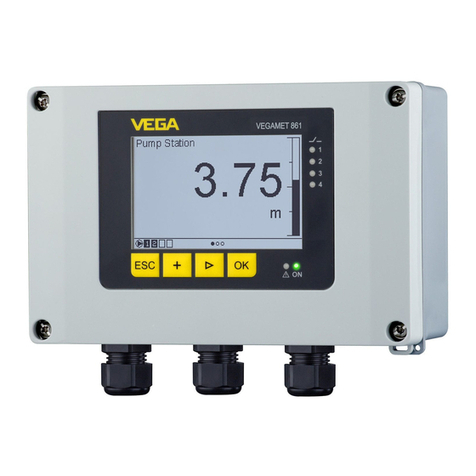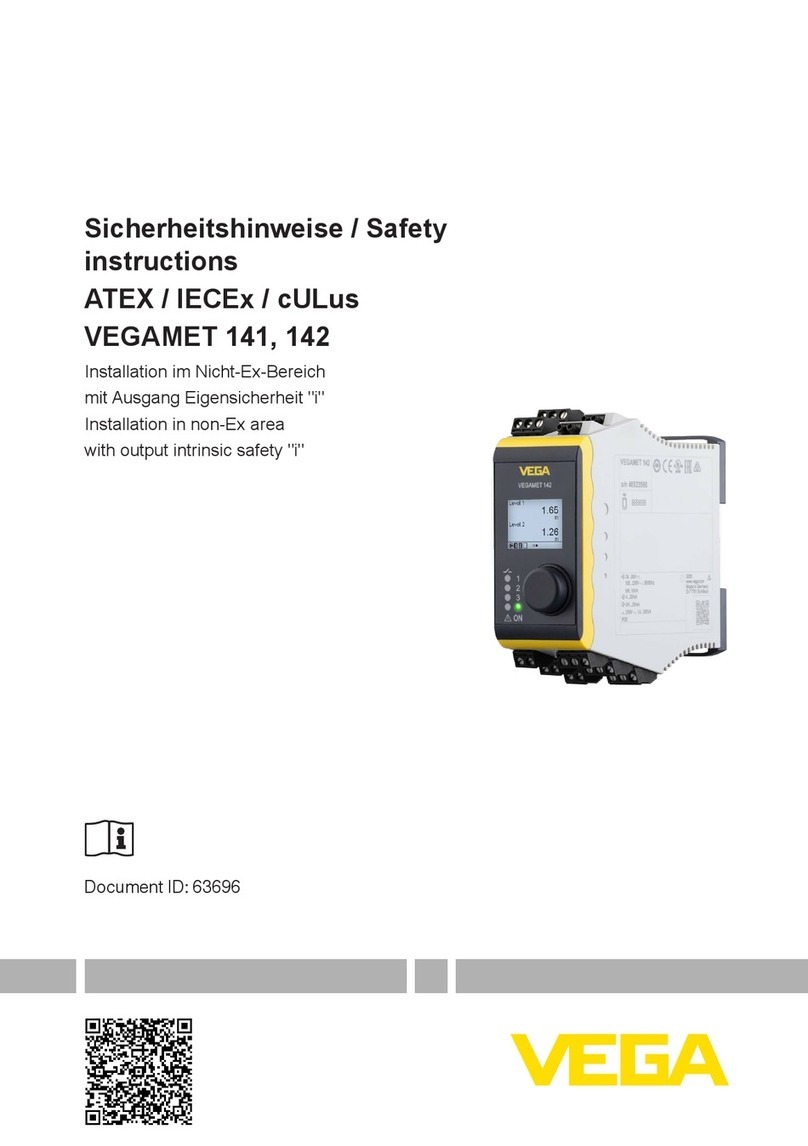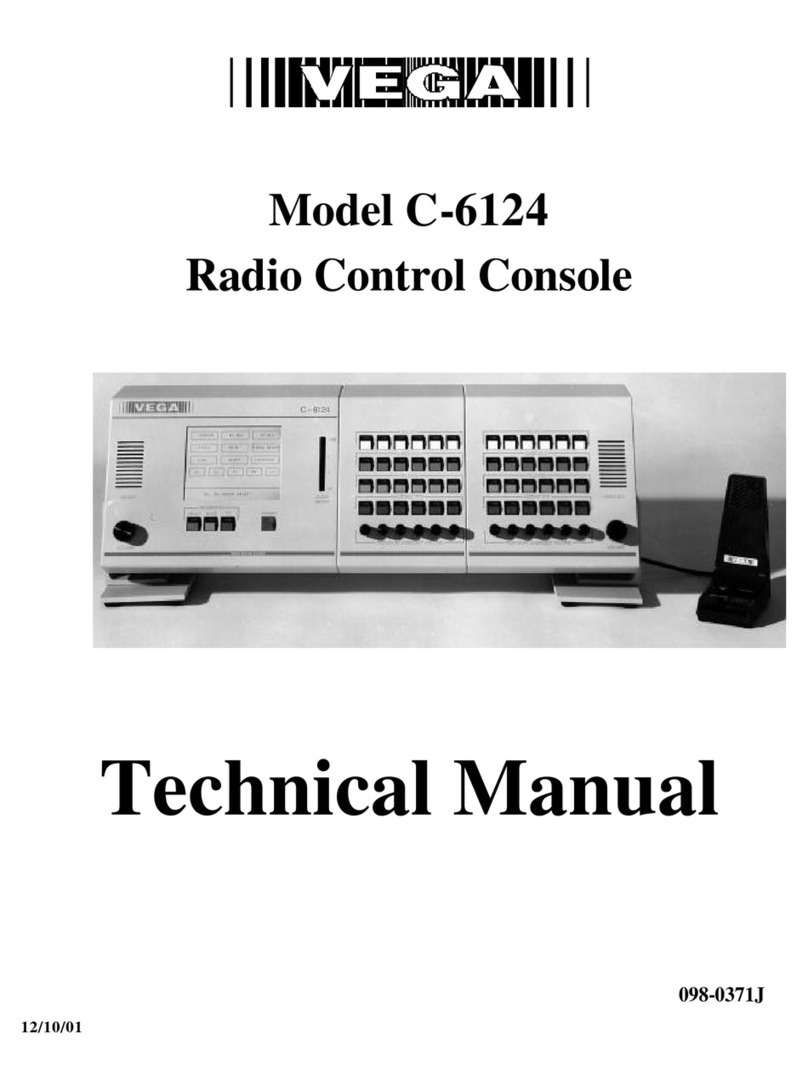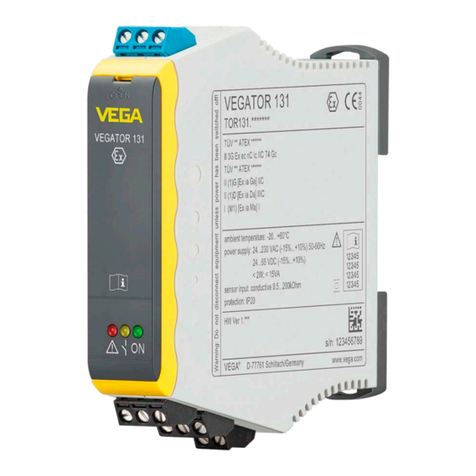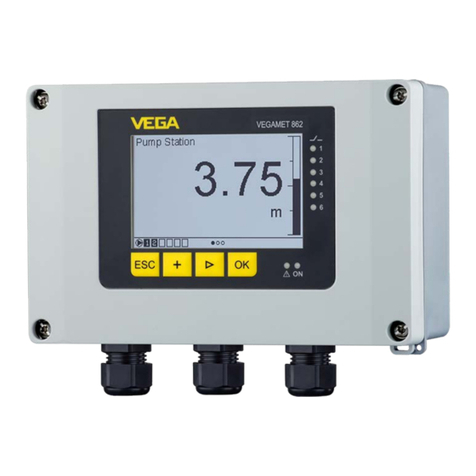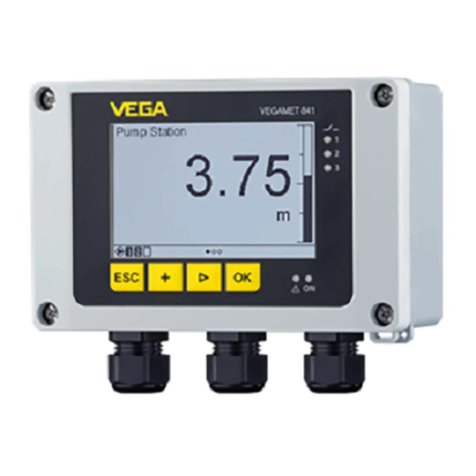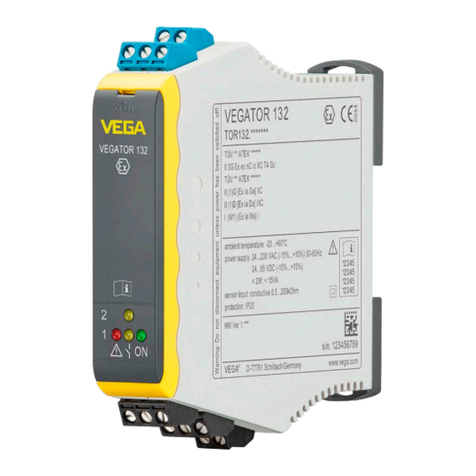
2
Contents
VEGATOR 121 •
57662-EN-210714
Contents
1 About this document ............................................................................................................... 4
1.1 Function ........................................................................................................................... 4
1.2 Target group ..................................................................................................................... 4
1.3 Symbols used................................................................................................................... 4
2 For your safety ......................................................................................................................... 5
2.1 Authorised personnel ....................................................................................................... 5
2.2 Appropriate use................................................................................................................ 5
2.3 Warning about incorrect use............................................................................................. 5
2.4 General safety instructions............................................................................................... 5
2.5 Installation and operation in the USA and Canada ........................................................... 5
2.6 Safety instructions for Ex areas ........................................................................................ 6
3 Product description ................................................................................................................. 7
3.1 Conguration.................................................................................................................... 7
3.2 Principle of operation........................................................................................................ 7
3.3 Adjustment ....................................................................................................................... 8
3.4 Packaging, transport and storage..................................................................................... 8
4 Mounting................................................................................................................................... 9
4.1 General instructions ......................................................................................................... 9
5 Connecting to power supply................................................................................................. 10
5.1 Preparing the connection ............................................................................................... 10
5.2 Connection procedure.................................................................................................... 11
5.3 Wiring plan ..................................................................................................................... 11
6 Setup ....................................................................................................................................... 13
6.1 Adjustment system......................................................................................................... 13
6.2 Adjustment elements...................................................................................................... 13
6.3 Automatic function test................................................................................................... 15
6.4 Function table "Point level" ............................................................................................. 17
7 Diagnostics and servicing .................................................................................................... 19
7.1 Maintenance .................................................................................................................. 19
7.2 Rectify faults................................................................................................................... 19
7.3 Diagnosis, fault messages ............................................................................................. 19
7.4 How to proceed if a repair is necessary.......................................................................... 20
8 Dismount................................................................................................................................. 22
8.1 Dismounting steps.......................................................................................................... 22
8.2 Disposal ......................................................................................................................... 22
9 Certicatesandapprovals.................................................................................................... 23
9.1 Approvals for Ex areas ................................................................................................... 23
9.2 EU conformity................................................................................................................. 23
9.3 SIL conformity (optional) ................................................................................................ 23
9.4 Environment management system ................................................................................. 23
10 Supplement ............................................................................................................................ 24
10.1 Technical data ................................................................................................................ 24
10.2 Dimensions .................................................................................................................... 26
10.3 Industrial property rights................................................................................................. 27
